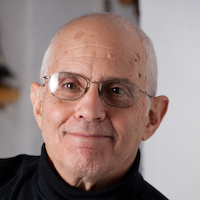Seeking Balance in the Big Debate
As I run around giving public talks about American Veda, I’m frequently asked, “Is Yoga a form of Hinduism?” or “Where do you stand on the Yoga-Hinduism debate?” People expect a quick, pithy answer, and I wish I had one. But the truth is, the issue is way too complicated for sound bites.
I’ve read compelling analyses from scholars who end up reaching drastically different conclusions. I’ve read impassioned essays by people with skin in the game, who sound equally convincing even though their positions contradict one another. In the end, it seems to depend on how you interpret history and how you define both Hinduism and Yoga. And that is not as simple as it sounds.
If you think of Hinduism as the modern term for the diverse body of spiritual teachings that originated in the ancient Vedic period and later evolved into various forms, then you will be inclined in one direction. If your definition centers on the religious forms practiced by the majority of Indians today, or on the descriptions of Western scholars of religion, you might end up in a different place. Your position will also vary depending on whether you think of Yoga as the science of realization expounded by the ancient sages in texts like the Bhagavad Gita and the Yoga Sutras, or whether you limit the definition to the postural Yoga that dominates the modern scene.
Much of the brouhaha boils down to semantics. The Hindu American Foundation (HAF), whose Take Back Yoga campaign ignited the controversy, is comparable to the Anti-Defamation League and other organizations established by religious minorities and new immigrant groups to combat stereotypes, misconceptions and bigotries. HAF’s representatives, almost all of whom are American-born, have their work cut out for them, since what British imperialists labeled Hinduism (“Hindu” originally referred to the inhabitants of the Indus River area) has been grossly mischaracterized for centuries, for reasons stemming from both understandable ignorance and inexcusable mendacity. Just getting Americans to realize that their religion is not polytheistic, or that the caste system is as much a cultural-historical phenomenon as a religious one, is a monumental task, and HAF and its allies are making heroic strides. They see their effort to link the roots of Yoga to their spiritual heritage–a venture that is far more modest than the phrase “Take Back Yoga suggests–as part of their overall mission. Even if you disagree with their historical analysis or their choice of terminology, it should be easy for any American to sympathize with their motivation.
At the same time, the reluctance of Yoga teachers and journalists to make that link is also understandable, and many Hindu Americans I’ve spoken to acknowledge that. The problem, of course, is that Hinduism is a religious term, and in a society where “spiritual but not religious” is the fastest-growing category in religion surveys, this is a major issue. The language dilemma gets especially dicey when you’re dealing with principles and practices that are so universal they can be expressed in secular as well as spiritual terms, and most students probably do see Yoga as a system of mental and physical self-improvement. Add to that the fact that many who are born into Hindu families prefer the original term, sanatana dharma (roughly, the eternal path), because the category Hinduism was invented by the West to fit its system of religious classification. And, significantly, all the great gurus, swamis and Yoga masters who transformed Western spirituality made a point of saying they are not propagating Hinduism but are offering a science of consciousness. Swami Vivekananda, for instance, created the Vedanta Society, not the Hinduism Society; Paramahansa Yogananda started the Self-Realization Fellowship, not the Hindu Fellowship, and his famous memoir was not called Autobiography of a Hindu. These teachers knew that pragmatic Americans would respond better to non-religious language.
Which is why leaders in the Yoga community have been reluctant to use the term Hinduism, even if they sympathize with HAF’s underlying rationale. They are more than willing to acknowledge Yoga’s deep and ancient spiritual foundation, but they prefer to use Vedic, Yogic or Indian rather than a religious term that carries all the erroneous baggage that, ironically, organizations like HAF are laboring to correct.
The language issue will work itself out in time, through the individual decisions of teachers, writers and advocacy groups. But there’s one thing everyone ought to be able to agree on: whatever vocabulary we use, we need to make every effort to preserve, protect and propagate the spiritual foundations of Yoga. If we fail to do that we will have trivialized something profound, rendered shallow something deep and corrupted something precious and sacred.











Read 12 comments and reply